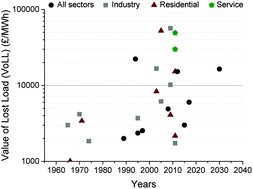Quantifying the value of CCS for the future electricity system
Abstract
Many studies have quantified the cost of Carbon Capture and Storage (CCS) power plants, but relatively few discuss or appreciate the unique value this technology provides to the electricity system. CCS is routinely identified as a key factor in least-cost transitions to a low-carbon electricity system in 2050, one with significant value by providing dispatchable and low-carbon electricity. This paper investigates production, demand and stability characteristics of the current and future electricity system. We analyse the Carbon Intensity (CI) of electricity systems composed of unabated thermal (coal and gas), abated (CCS), and wind power plants for different levels of wind availability with a view to quantifying the value to the system of different generation mixes. As a thought experiment we consider the supply side of a UK-sized electricity system and compare the effect of combining wind and CCS capacity with unabated thermal power plants. The resulting capacity mix, system cost and CI are used to highlight the importance of differentiating between intermittent and firm low-carbon power generators. We observe that, in the absence of energy storage or demand side management, the deployment of intermittent renewable capacity cannot significantly displace unabated thermal power, and consequently can achieve only moderate reductions in overall CI. A system deploying sufficient wind capacity to meet peak demand can reduce CI from 0.78 tCO2/MWh, a level according to unabated fossil power generation, to 0.38 tCO2/MWh. The deployment of CCS power plants displaces unabated thermal plants, and whilst it is more costly than unabated thermal plus wind, this system can achieve an overall CI of 0.1 tCO2/MWh. The need to evaluate CCS using a systemic perspective in order to appreciate its unique value is a core conclusion of this study.


 Please wait while we load your content...
Please wait while we load your content...